
Lycoperdon is a genus of puffball mushrooms. The genus has a widespread distribution and contains about 50 species. In general, it contains the smaller species such as the pear-shaped puffball and the gem-studded puffball. It was formerly classified within the now-obsolete order Lycoperdales, as the type genus which, following a restructuring of fungal taxonomy brought about by molecular phylogeny, has been split. Lycoperdon is now placed in the family Agaricaceae of the order Agaricales.

Johann Georg Wagler was a German herpetologist and ornithologist.

Gustav von Paykull was a Swedish friherre and Marshal of the Court, ornithologist, and entomologist.

John Lindley FRS was an English botanist, gardener and orchidologist.
The Premio Carlo Vittadini is a Group 3 flat horse race in Italy open to thoroughbreds aged three years or older. It is run at Milan over a distance of 1,600 metres, and it is scheduled to take place each year in late May or early June.
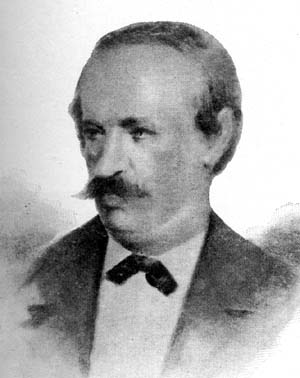
Carlo Vittadini was an Italian doctor and mycologist.
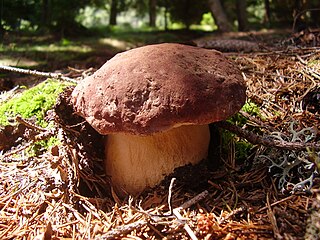
Boletus pinophilus, commonly known as the pine bolete or pinewood king bolete, is a basidiomycete fungus of the genus Boletus found throughout Europe and western Asia. Described by Italian naturalist Carlo Vittadini in 1835, B. pinophilus was for many years considered a subspecies or form of the porcini mushroom B. edulis before genetic studies confirmed its distinct status. In 2008, B. pinophilus in western North America were reclassified as a new species, B. rex-veris. B. pinophilus is edible, and may be preserved and cooked.

Gautieria is a genus of hypogeal fungi in the family Gomphaceae. They form mycorrhizae with various tree species, mostly from the family Pinaceae. Species are present over much of the world's temperate and boreal forest habitats. It is well documented that species from this genera are an important part of the diet of the northern flying squirrel. Also, some Australian marsupials, especially the rat-kangaroos, feed extensively on these fungi. The fungi also benefit from this relationship: not only do the squirrels help to disperse the spores and propagate the species, studies suggest that passage through the digestive tract of a mammal promotes germination of spores.

Genea is a genus of truffle-like fungi in the family Pyronemataceae. There are about 32 species in the genus that occur in North America and Europe. The genus was circumscribed by Italian mycologist Carlo Vittadini in 1831.
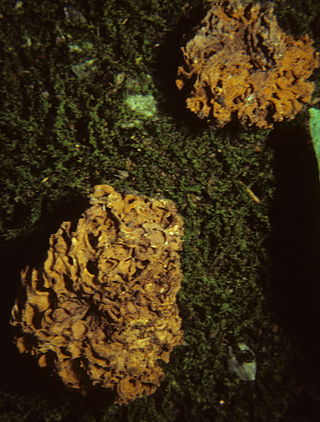
Gautieria morchelliformis is a species of hypogeal fungus in the family Gomphaceae. It was first described scientifically by Italian Carlo Vittadini in 1831. Three varieties have been described: var. globispora and var. stenospora by Albert Pilát in 1958; and var. microspora by Evžen Wichanský in 1962. None are considered to have independent taxonomical significance.

Hysterangium is a genus of truffle-like fungi in the family Hysterangiaceae. The genus is widespread, especially in temperate regions, and contains more than 60 species. Hysterangium was circumscribed by Italian mycologist Carlo Vittadini in 1831.
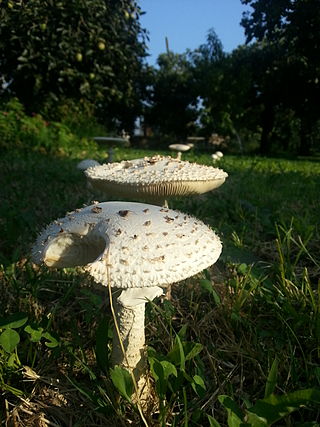
Saproamanita vittadinii, commonly known as the Vittadini's lepidella, is a European saprophyte mushroom classified in the genus Saproamanita. Unlike some Amanitas, this species is known to occur without accompanying woody plant symbionts. It has a general aspect somewhat between Macrolepiota and Armillaria, but it is characterized by a pure white colour overall and by the squamous (scaly) covering of cap and stipe.

Eryngium foetidum is a tropical perennial herb in the family Apiaceae. Common names include culantro, recao, chadon beni, Mexican coriander, bandhaniya, long coriander, Burmese coriander, sawtooth coriander, and ngò gai. It is native to Mexico, the Caribbean, and Central and South America, but is cultivated worldwide, mostly in the tropics as a perennial, but sometimes in temperate climates as an annual.

Octaviania is a genus of truffle-like fungi in the family Boletaceae. The widespread genus is estimated to contain 15 species.

Tuber melanosporum, called the black truffle,Périgord truffle or French black truffle, is a species of truffle native to Southern Europe. It is one of the most expensive edible fungi in the world. In 2013, the truffle cost between 1,000 and 2,000 euros per kilogram.
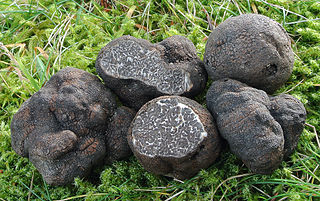
Tuber macrosporum, commonly known as the smooth black truffle, is a species of edible truffle in the family Tuberaceae. Found in Europe, and common in central Italy, the truffle was described as new to science by Italian mycologist Carlo Vittadini in 1831. The truffles are roughly spherical to irregular in shape, and typically measure 0.5 to 2 centimetres in diameter. The surface color ranges from reddish brown to rust to blackish. Warts on the fruit body surface are low, so that the truffle appears fairly smooth. The truffle flesh is purplish brown to grey-brown with thin white veins. It has an intense garlic-like odor similar to the Italian white truffle. Host plants of T. macrosporum include poplars, hazel, linden, and oaks.
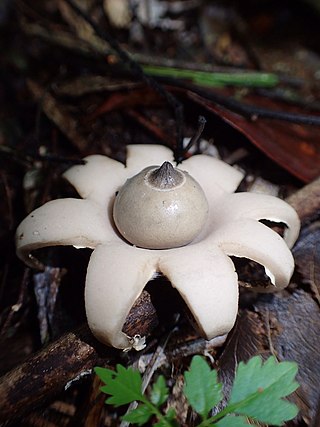
Geastrum lageniforme is a species of fungus belonging to the genus Geastrum. It was described as new to science by Italian mycologist Carlo Vittadini. It is found in Africa, Europe, North America, and South America.

Tuber borchii, known as the whitish truffle or bianchetto truffle, is a small, common species of edible truffle excellent for use in cuisine.
















